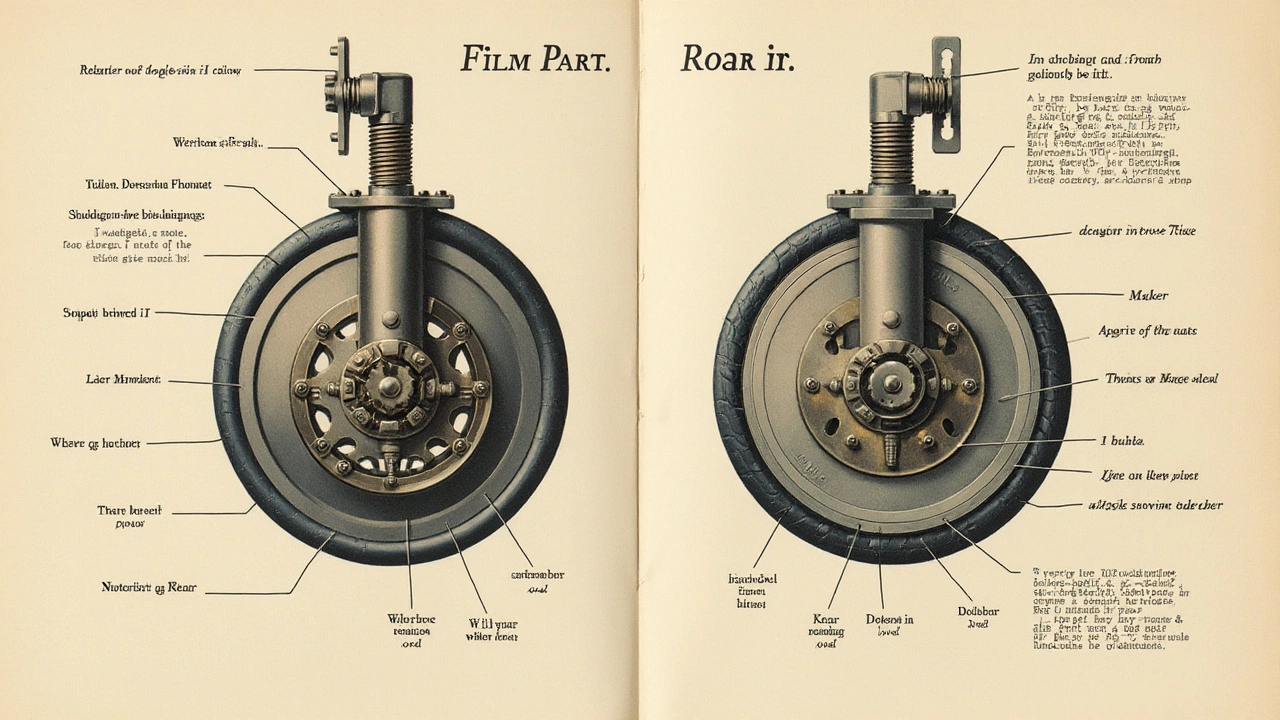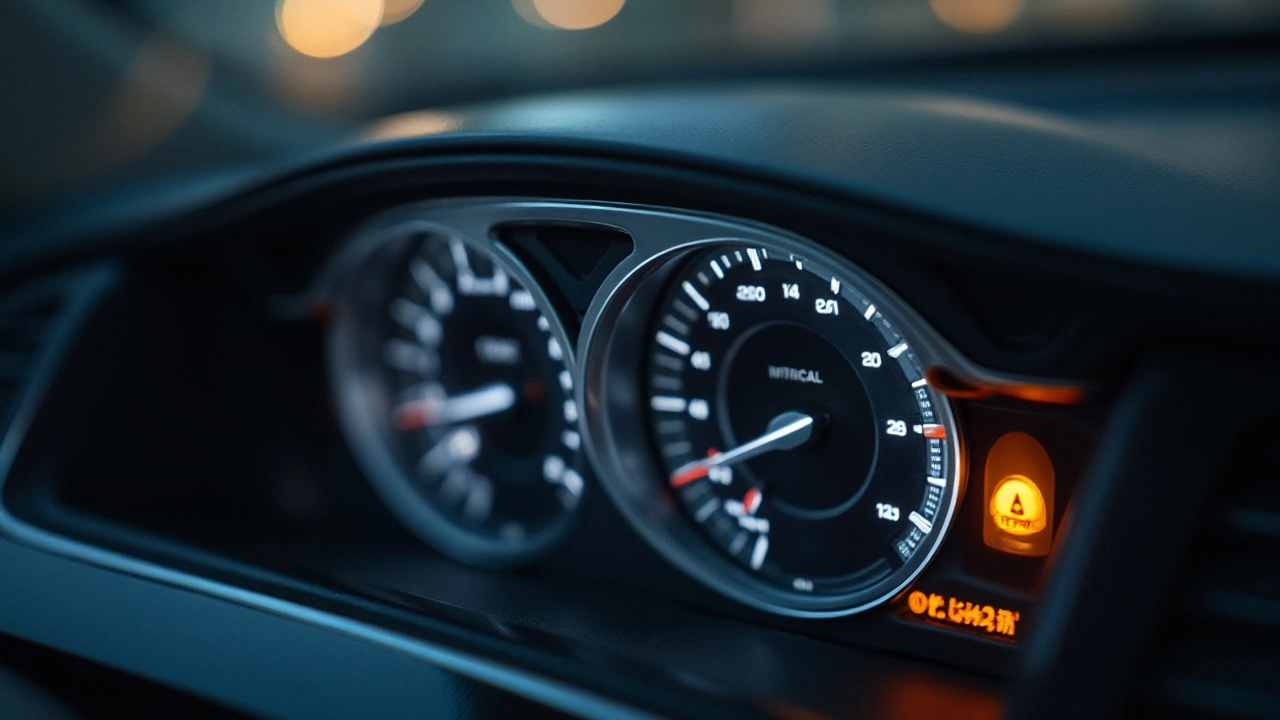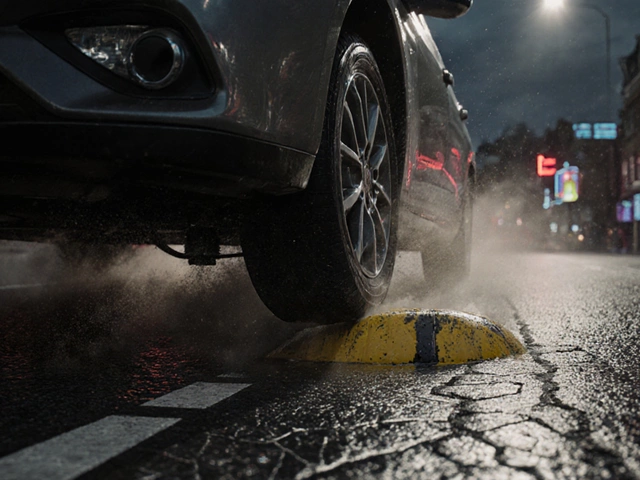When you hit the brake pedal, a lot more happens than just bringing your car to a stop. The intricate dance between front and rear brakes plays a crucial part in this process. The question often arises: which is more important? To truly grasp the importance of each, it's vital to understand their unique roles in a vehicle's braking system.
Front brakes take the lead when it comes to stopping power. As the vehicle decelerates, weight transfers to the front wheels, demanding more effort from the front brakes. This makes them responsible for a larger share of the stopping work. Meanwhile, rear brakes, while taking a backseat figuratively, are essential for balance and stability, preventing the rear of the vehicle from skidding.
Regular maintenance of both front and rear brakes ensures a smooth and safe driving experience. Simple checks and timely replacements can make a huge difference, keeping the braking system in top condition and ensuring it responds effectively when needed. Dive into the world of brakes to unlock their secrets and make your journeys as safe as possible.
- Understanding Brake Dynamics
- The Role of Front Brakes
- The Function of Rear Brakes
- Tips for Brake Maintenance
Understanding Brake Dynamics
Brake dynamics are at the heart of how a vehicle comes to a stop, orchestrating a complex interaction between various components. When you press the brake pedal, the operation may seem simple, but it initiates a chain reaction of forces and mechanical actions that require synchronized precision. Let's dive into the basics. At the forefront, we have the hydraulic system, which magnifies your foot's effort via brake fluid. As pressure builds, it transfers force to the *brake pads*. These pads then push against the rotors attached to the wheels, creating friction that slows the car down. Friction, as unassuming as it may sound, is actually the hero of this process as it converts kinetic energy into heat, slowing down the wheels and, consequently, the car.
The importance of understanding brake dynamics extends beyond just stopping a vehicle. It encompasses the overall balance and control of the car, especially when sudden stops are necessary. Engineers design most braking systems to favor the front wheels with more stopping power, which is why the *front brakes* are crucial. When a vehicle decelerates, weight transfers towards the front, emphasizing the need for robust front braking. Meanwhile, the *rear brakes* play a slightly different role—not as much in stopping directly, but in handling stability and control. They prevent the back of the vehicle from lifting excessively, ensuring smooth, balanced stops. In modern systems, electronic brake distribution adjusts the braking force automatically between the front and rear based on the circumstances.
An engaging aspect about brake dynamics is their adaptation over time with technological advancements. Early cars relied on mechanical brakes, which required frequent adjustment and were less reliable. The introduction of hydraulic brakes marked a significant leap, offering more consistent braking power. Today, Antilock Braking Systems (ABS) add another layer of safety by preventing wheel lock during sudden stops, allowing drivers to maintain steering control. ABS has become standard in many regions worldwide, and it's a testament to how brake systems continually evolve to meet safety standards and enhance driving experiences. As James R. Healey from USA Today aptly put it,
"Brakes are the car's most potent spearhead of mechanical evolution, embedding safety in the very cadence of motion."
As we peek further into brake dynamics, data from various studies underline their effectiveness in preventing accidents. According to the National Highway Traffic Safety Administration, accidents involving rear-end collisions have reduced significantly with the implementation of advanced braking systems. For instance, studies show a 20% decrease in such accidents post-ABS adoption. This data emphasizes how crucial the understanding and innovation in brake systems have become in ensuring road safety. The dynamics not only reflect the complexities of vehicle mechanics but also showcase an evolving discipline striving for maximal efficiency and safety on every drive.

The Role of Front Brakes
The front brakes of a vehicle are akin to the lead performers in a well-orchestrated dance number—their function is vital and often takes on a major chunk of the performance. When driving, as a vehicle comes to a stop, the physics of momentum transfers the bulk of the vehicle's weight towards the front end due to the inertia. This weight shift increases the load on the front wheels, thus naturally necessitating greater stopping power from the front brake pads. This is why manufacturers often design front brakes to be larger and more robust than those at the rear. This increased demand makes front brakes responsible for about 70% of the braking force in many vehicles.
Consider the action of emergency braking, where the immediate need to stop highlights the importance of powerful front brakes. It's during these critical moments that the dependable efficiency of front brakes is truly appreciated by drivers. Their design, often involving disc brakes with superior cooling and heat dissipation technology, ensures they can withstand repeated use without failing. In fact, it's no coincidence that high-performance cars often feature ventilated discs specifically for this reason, showcasing an emphasis on maintaining the thermal stability of these vital components.
It's not just modern mechanics that appreciates their significance; automotive professionals have long recognized the critical role of front brakes. As brake systems have evolved over the years, the progressive improvements in front brake technology continue to enhance the safety and control of vehicles. As Michael Prichinello, an automotive specialist, aptly put it in a recent article,
"Front brakes are less about slowing down and more about staying safe. They're the hydraulic heroes transforming potential chaos into calm."Understanding their immense role provides insight into why automotive experts routinely emphasize the importance of maintaining the health of front brakes at regular intervals. This includes checking the thickness of the brake pads, ensuring proper fluid levels in the hydraulic system, and occasionally bleeding the brakes to remove air bubbles that can compromise braking effectiveness.
Moreover, a careful balance between front and rear brakes is crucial. While front brakes bear the brunt of stopping effort, putting too much strain on them without adequate rear brake support can lead to uneven wear, potentially resulting in diminished braking capacity and efficiency. In some instances, it could lead to the dreaded scenario of brake fade, where the brakes lose effectiveness after repeated heavy use. That’s why conscientious drivers and car enthusiasts encourage regular inspections and maintenance. Some may find value in installing larger front brake pads or switching to performance-grade materials to boost effectiveness. Nonetheless, it's essential for drivers to converse with a trusted mechanic about the best options for their specific driving conditions and style.

The Function of Rear Brakes
Rear brakes often don’t get the spotlight they deserve, yet they are vital for a vehicle’s safe operation. Unlike the more exerted front brakes, rear brakes provide necessary balance while enhancing the vehicle’s overall stability. Imagine driving on a slick, rainy day; effective rear braking can prevent the rear wheels from locking up and losing traction, especially during sudden halts. This gives the car a balanced posture, reducing the risk of fishtailing or spinning out, which can be crucial particularly on wet roads or slippery surfaces.
The rear brakes use a different mechanism than the front. Typically, in disc-brake systems, the rear may have drum brakes, which are robust and reliable for handling lighter loads of braking force here. In modern vehicles, both wheels may feature disc brakes but are often smaller on the rear. This configuration ensures they provide sufficient support without overpowering the car's stopping force, allowing the front brakes to do the heavy lifting during a stop. Studies show that rear brakes contribute about 20-30% of a car's total stopping power, a significant percentage when every meter counts.
Beyond simple stopping, rear brakes engage in various driving scenarios. For example, during downhill driving, they work continuously to prevent the vehicle from gaining excessive speed. This feature protects both the driver and the transmission system, reducing wear. They're also critical when it comes to parking; the handbrake system often engages the rear brakes to hold the vehicle securely in place. This multifunctionality makes maintaining brake pads in excellent condition vital for driver safety.
"The importance of rear brakes should not be underestimated," says John Smith, a renowned automotive engineer. "While they may seem secondary to front brakes, their role in vehicle stability and control is crucial especially in unexpected driving conditions."
Interestingly, many rear brake systems integrate electronic stability and traction control systems, providing a smoother and safer ride. These technologies intervene automatically to apply braking force when sudden shifts or slips are detected, ensuring the vehicle remains on course. With advances in vehicle technology, such systems may dynamically adjust the rear braking force, supplying just the right amount as needed. This improves fuel efficiency, as not too much energy is wasted on braking, while simultaneously enhancing safety protocols in real-time.

Tips for Brake Maintenance
Keeping your vehicle's brakes in good shape is not just a recommendation; it's essential for your safety and those around you. Even if you're not a car expert, there is a range of relatively easy things you can do to ensure your brake pads and other components are tip-top. First up, regular inspection can save you from unexpected and costly repairs. It's advisable to have your brakes checked at least once every six months if not sooner. This routine helps spot wear or any potential issues early and ensures the brakes are functioning optimally. Pay close attention to any noises during your drive; squeals, squeaks, and grinding can indicate worn-out pads or damage to the rotor.
Replacing front brakes and rear brakes timely is crucial. Brake pads generally need replacing every 20,000 to 60,000 miles, but this can depend on your driving style and conditions you drive in. It's wise not to skimp on this aspect; quality over price can mean the difference between safe stops and a dangerous situation. Also, if you live in a particularly dusty or sandy climate, brake dust can build up more quickly and should be cleaned off regularly to maintain performance.
"Proper maintenance of brakes is the foundation of vehicle safety," says Tim Smith, an expert in automotive mechanics.
Keeping an eye on brake fluid is another important task. Brake fluid should be changed every two years or when you find it’s dirty upon inspection. It plays a crucial role in the functioning of brakes, transferring the force when you press the brake pedal. Without adequate and quality fluid, your brakes will not respond as they should, leading to more serious problems. Always use the correct type of brake fluid specified for your car for the best performance. Never compromise on quality when it comes to brake fluid; after all, it’s a key element of your braking system.
Another aspect is monitoring rotors. Rotors should be smooth and without grooves. If you notice a vibration or pulsing when braking, it might be an indication of warped rotors which means immediate attention is required. Driving with such issues can not only make the brake system less effective but also lead to the failure of other connected components. Ensuring that the rotors are checked and resurfaced or replaced as needed is key to secure braking capability. Moreover, the calipers, those that hold the brake pads, should also be inspected for proper functionality. They need to be working in harmony with the brake pads and rotors to deliver consistent braking performance.




